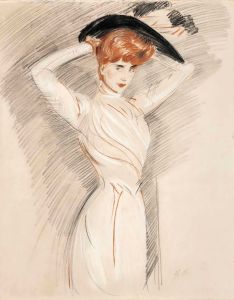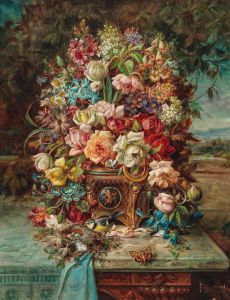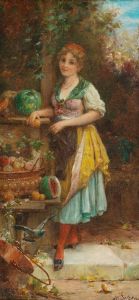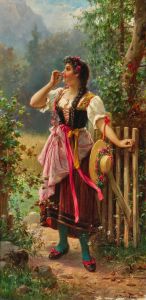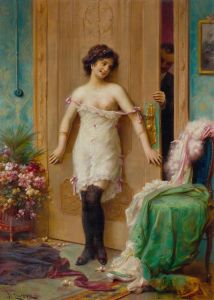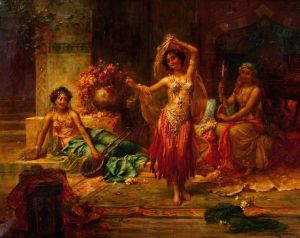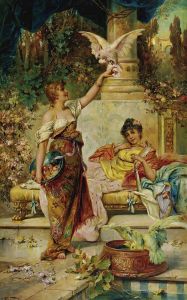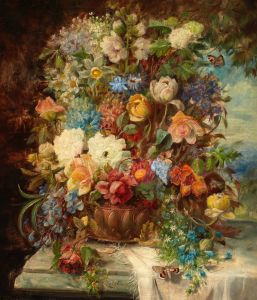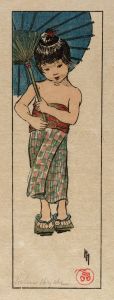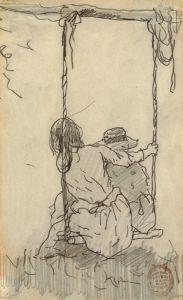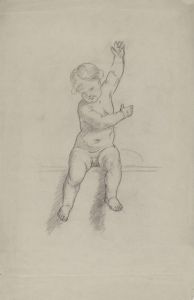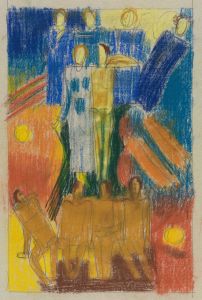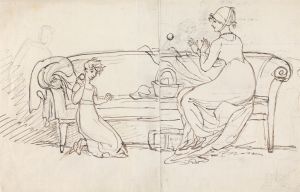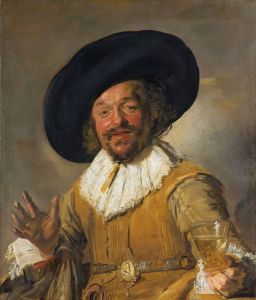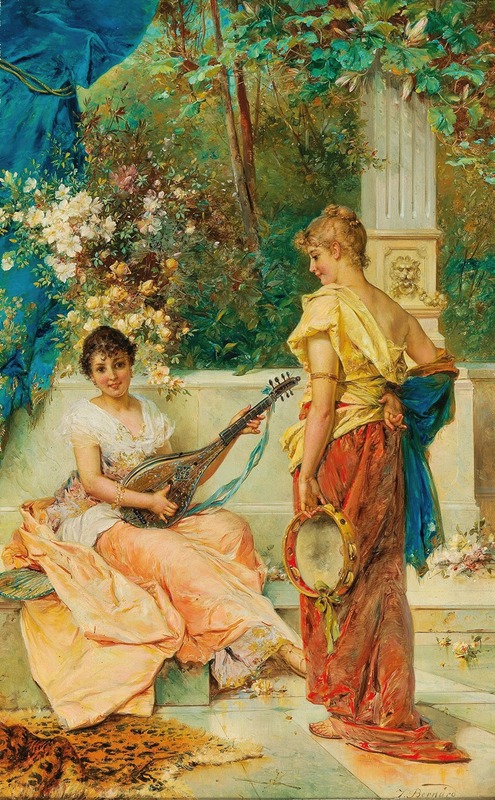
A merry tune
A hand-painted replica of Hans Zatzka’s masterpiece A merry tune, meticulously crafted by professional artists to capture the true essence of the original. Each piece is created with museum-quality canvas and rare mineral pigments, carefully painted by experienced artists with delicate brushstrokes and rich, layered colors to perfectly recreate the texture of the original artwork. Unlike machine-printed reproductions, this hand-painted version brings the painting to life, infused with the artist’s emotions and skill in every stroke. Whether for personal collection or home decoration, it instantly elevates the artistic atmosphere of any space.
Hans Zatzka was an Austrian painter known for his romantic and idyllic depictions of women, cherubs, and mythological scenes. Born in Vienna in 1859, Zatzka studied at the Academy of Fine Arts in Vienna and became a prolific artist, creating works that were highly popular in his time. His paintings often featured vibrant colors and detailed compositions, capturing the essence of the late 19th and early 20th-century European art scene.
"A Merry Tune" is one of Zatzka's works that exemplifies his style and thematic preferences. Although specific details about this painting are limited, it is consistent with Zatzka's oeuvre, which often includes joyful and whimsical scenes. His paintings frequently depict beautiful women in serene settings, often accompanied by musical instruments, cherubs, or elements of nature, suggesting a harmonious and enchanting world.
Zatzka's work is characterized by its meticulous attention to detail and the use of bright, vivid colors. He had a particular talent for rendering textures and fabrics, which brought a sense of realism and depth to his compositions. This attention to detail is evident in "A Merry Tune," where the interplay of light and shadow, along with the delicate rendering of figures, creates a lively and engaging scene.
The themes of music and merriment are common in Zatzka's paintings, reflecting the cultural milieu of Vienna during his lifetime. The city was a hub of artistic and musical innovation, and Zatzka's work often mirrored the joyous and celebratory spirit of the era. His paintings were widely reproduced and distributed, making them accessible to a broad audience and contributing to his popularity.
Zatzka's art was not limited to canvas; he also created frescoes and murals, further showcasing his versatility as an artist. Despite the popularity of his work during his lifetime, Zatzka often signed his paintings with pseudonyms such as "Joseph Bernard" or "Bernard Zatzka," possibly to avoid contractual obligations or to appeal to different markets.
Today, Hans Zatzka's paintings, including "A Merry Tune," continue to be appreciated for their charm and technical skill. They are often found in private collections and occasionally appear in art auctions, where they attract collectors interested in 19th-century European art. While Zatzka may not be as widely recognized as some of his contemporaries, his work remains a testament to the romantic and idyllic visions that captivated audiences in his time.
In summary, "A Merry Tune" by Hans Zatzka is a reflection of the artist's ability to capture the beauty and joy of life through his detailed and vibrant compositions. His work continues to be celebrated for its artistic merit and its ability to transport viewers to a world of elegance and enchantment.





